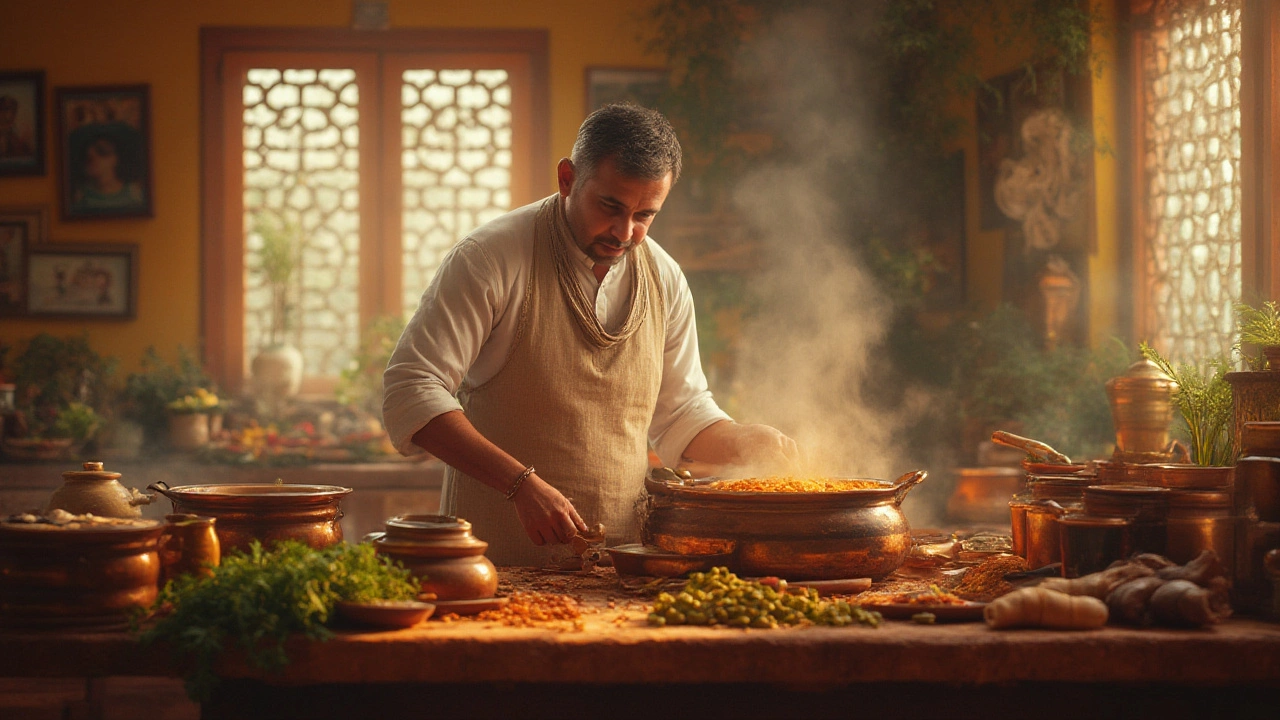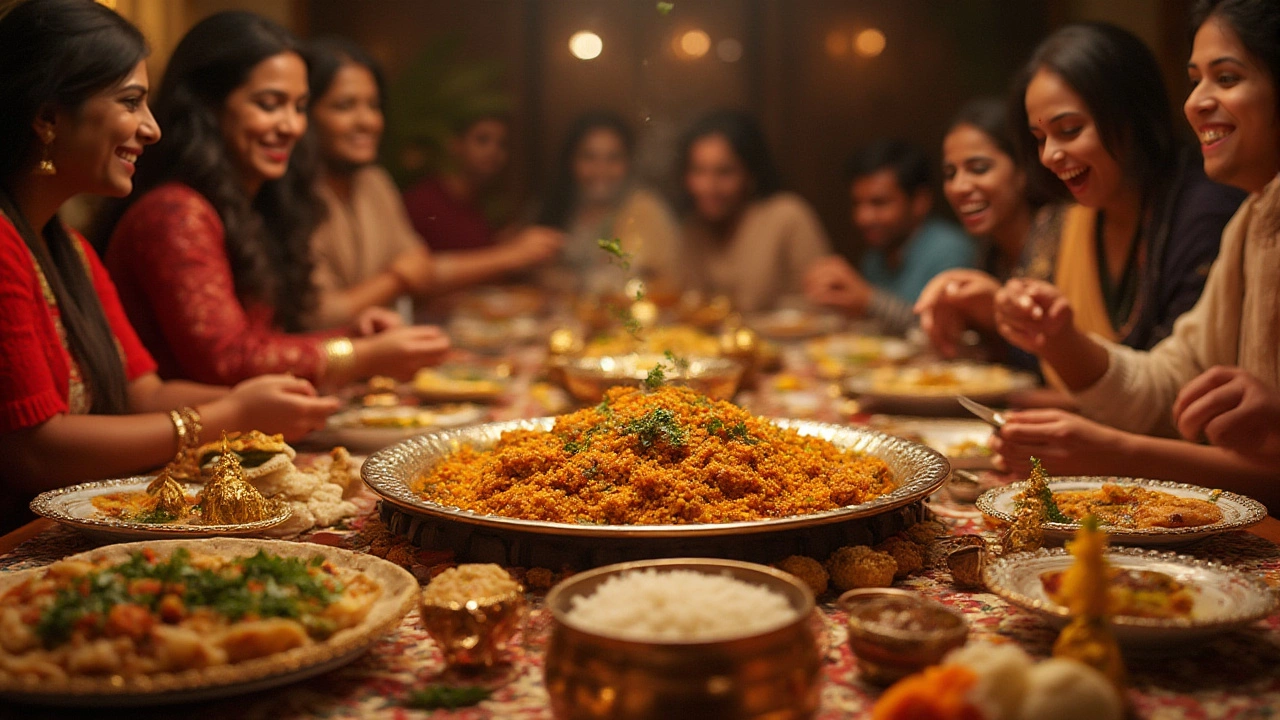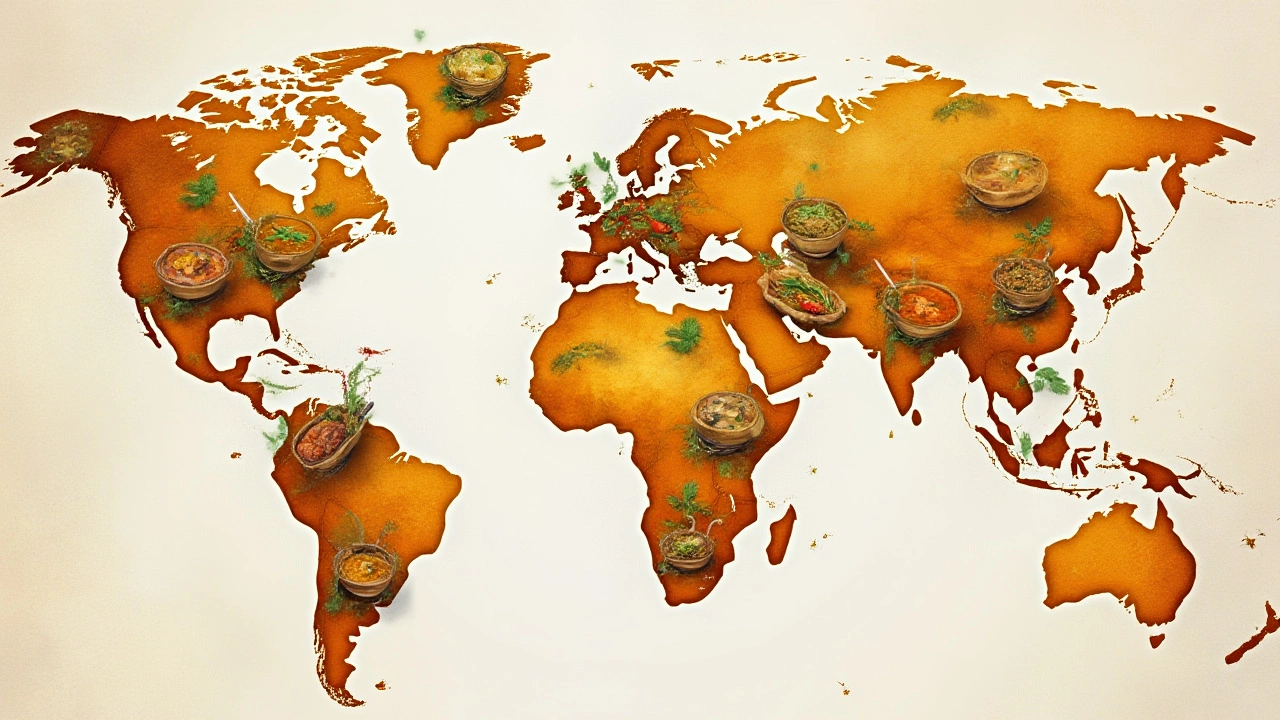
Picture a table spread with steaming bowls, floating aromas, and the vibrant colors of Indian cuisine. The question that's sparked countless debates and mouthwatering cravings: What truly is the king of all curries? Some answer without hesitation (Butter Chicken!), others argue for legendary Mutton Rogan Josh or rich Paneer Makhani. The real answer? It’s not that simple—and that’s what makes the search so fun.
The Birthplace of Curries: Roots and Rivalries
India is the cradle of curries—this isn’t just marketing, but a fact etched across thousands of years, from the Harappan civilization’s ancient spice mixes to the Mughal emperors’ lavish feasts. Curries have traveled—they’ve dazzled both royal banquets in Rajasthan and the most humble street-side stalls in Chennai. Each region has its unshakable favorite: fiery Chettinad chicken from the south, delicate saffron-laced Kashmiri Rogan Josh from the north, coconut-rich Kerala fish curry sweeping in from the southwest coast. What makes something a ‘king’ is so wrapped up in context: history, climate, even family tradition.
But if you look at pure popularity—what most people worldwide would recognize, the dish that’s been declared the national food of the UK and inspired global restaurant chains—it has to be Butter Chicken (Murgh Makhani). Invented in Delhi in the late 1940s, this curry took leftover tandoori chicken and blanketed it in a smooth, tomato-butter-cream sauce. The taste is all about balance: sweet, tangy, just a whisper of chili heat. The color pops: a molten orange, so inviting it’s basically edible art. Is it the most complex curry? Maybe not, but it somehow feels like a warm hug in a bowl.
Now, ask anyone from Punjab, and they’ll swear their butter chicken is king. Head to Hyderabad, and you’ll get long lectures about spicy, aromatic biryani-masala curries. This tug-of-war keeps the curry culture thriving and growing, sparking friendly rivalries that push cooks to perfect their craft. The king can change depending on where you pull up a chair.
What Makes a Curry “King”—Breaking Down the Essentials
So, what are the ingredients, techniques, and secrets that elevate a curry above the rest? Let’s get real: making a king-worthy curry isn’t about just heat or complex spice lists. It’s about harmony—nothing overpowers, everything has a place.
Take Butter Chicken for example. Its ingredient list starts simple but each step reveals obsessive attention to flavor and texture. First, you marinate chunks of chicken in yogurt, ginger, garlic, chili, and garam masala for hours—sometimes overnight. This isn’t just marinade for taste; the lactic acid in yogurt works magic, tenderizing every bite. Once grilled or seared, the smoky char brings a roasted layer that stands up to a luxurious sauce of tomatoes, cream, and—true to its name—butter. That’s not just indulgence: the fat helps carry the spices and rounds off acidity, giving a silky mouthfeel. Add a little fenugreek (kasuri methi), and a sprinkle of sugar—small moves with big emotional impact.
It’s science and intuition—knowing when to hold back, when to go bold, and how to blend a rainbow of spices so the hallmark isn’t chaos, but comfort. The best curries also play the texture game. Some, like Kerala’s Ishtu, go for silky coconut milk and velvet-soft potatoes. Others, like Chettinad, coat their protein in a paste so fragrant and punchy, your tastebuds stand at attention. The real kings make every bite interesting, from the first dunk of naan to the last spoonful over rice.
Here’s a quick look at what goes into the “king-maker” curries in India:
| Curry | Main Protein | Signature Flavor | Key Ingredient |
|---|---|---|---|
| Butter Chicken | Chicken | Rich, creamy | Butter, tomato, cream |
| Rogan Josh | Lamb/Mutton | Fennel, Kashmiri chili | Mustard oil, yogurt |
| Chettinad Chicken | Chicken | Black pepper, coconut | Peppercorn, fresh coconut |
| Paneer Makhani | Paneer (cheese) | Tomato, creamy | Cream, cashew |
| Goan Fish Curry | Fish | Tamarind, coconut | Coconut milk, kokum |
This range is exactly why crowning one king sparks so much drama. Each dish is a love letter to its region, its soil, even the season: no surprise that secrets are fiercely guarded, with ‘grandma’s recipe’ whispered rather than published.

Butter Chicken: The Royal Reign in Popularity
Here’s something you might not expect: Butter Chicken isn’t just India-famous—it’s become a symbol of the country’s entire cuisine on a global stage. If you’ve ever looked at an Indian restaurant menu outside India, chances are Butter Chicken takes prime real estate. In a 2023 global survey of Indian restaurant sales, Butter Chicken outsold every other curry by nearly 2 to 1. It’s easy to see why. There’s no intimidation in the dish—nothing too hot, no mystery ingredients—and it partners up perfectly with fluffy naan or long-grained basmati rice.
The backstory adds a layer of charm. The legend goes that Kundan Lal Gujral, working in Moti Mahal restaurant in Delhi, tossed leftover tandoori chicken chunks into a simmering pot of tomato gravy, then finished the dish with a slab of butter and a trickle of cream. This wasn’t just a thrifty hack; it changed restaurant menus forever. Now, the ‘Makhani’ (meaning “with butter”) style has inspired dozens of spinoffs, from Paneer Makhani for vegetarians to Butter Prawns and even vegan “chicken” makhani starring soy protein.
It’s not just the sauce or chicken that hooks people—it’s the nostalgia. Folks who grew up on Sunday family feasts in Delhi or Mumbai associate the aroma of butter chicken with laughter, chai, and maybe a little chaos. For so many, a spoonful is a shortcut to home, no matter where they’re living now.
Want to make it at home? Here’s a tip that separates restaurant-level Butter Chicken from bland takeout tries: don’t skip the double-cooking of the chicken. Grill or broil chunks until slightly charred before they hit the sauce. That caramelized edge creates a real bridge between deeply flavored meat and that lush, tangy sauce. If you want to go traditional, finish with a pinch of dried fenugreek (kasuri methi) right at the end—no shortcuts here.
Still, not every Indian agrees on Butter Chicken as their number one. If you ask grandmothers in Lucknow, they’ll name the fragrant, slow-cooked Awadhi qormas. Coastal cooks may swear the king is found in a coconut-sour bomb of Goan xacuti. But ask the world? The data—and most people’s cravings—point to Butter Chicken as top dog.
Curry Culture: Changing the Game Around the World
Indian curries have done something most dishes only dream of—they’ve crossed oceans and broken borders, showing up everywhere from tiny Melbourne cafés to crowded corners of London’s Brick Lane. There are over 10,000 curry restaurants in the UK alone, and new variations are booming in Canada, the US, Singapore, and the UAE.
Butter Chicken's fame took off in the West after British Indian restauranteurs started tweaking it for less heat and creamier, slightly sweeter sauces. It started a wave: Chicken Tikka Masala (often confused with Butter Chicken)—which some say was actually invented by Scottish/Indian cooks—has even been called a “true British national dish.” The popularity spread further thanks to Bollywood, immigrant families, and food bloggers. Today, #butterchicken has over 3.8 million posts on Instagram, with everyone from home cooks to Michelin chefs giving it their own spin.
What’s cool is how curries keep adapting. Chefs today riff on the classics without losing what touches people most: that sense of celebration and comfort. Vegan and gluten-free versions now warm tables everywhere, proving that even old-school kings know how to keep up. Plus, quick-cooking hacks—think Instant Pot curries or air fryer roasted chicken—mean you don’t need a restaurant kitchen to get royal results at home.
People even debate on which side dish best suits the king. Is it a soft stack of butter-brushed naan? Basmati rice jeweled with cardamom? There’s no wrong answer, just more ways to make dinner special.
- If you’re making Butter Chicken at home, use double the tomato paste for sauce that shines brightest in color.
- Always let the curry rest for 20 minutes before serving, so the flavors find each other.
- If you want a dairy-free version, try coconut cream and olive oil—it won’t be classic, but it’ll still win hearts.
- Stale naan actually works beautifully to mop up the last of the sauce—don’t toss it out.
Food is about fun, family, and comfort. Curries, especially the king, fit right into that story everywhere they go.

Tips, Myths, and the Secret to Royal Curry At Home
No matter which curry has your heart, making it stand out at home is simpler than recipes make it look. The myth that you need an endless spice cabinet or hours of prep? Not true. Here’s what people often get wrong—and a few tricks I’ve learned in my kitchen wars.
- Fresh spices always trump store-bought blends. Toast your cumin, coriander, and chili powder in a dry pan for 30 seconds, and watch your kitchen transform.
- Acidity is vital. A splash of lemon juice or vinegar at the end of cooking wakes the whole dish up and balances out that richness.
- Layer your flavors. Sauté onions until golden, add ginger and garlic next, then ground spices. This order makes a difference—the aromatics need time to give up their magic.
- Don’t drown your curry in cream. Butter Chicken gets its reputation from balance, not from being heavy. Use less cream, more tomatoes, and a little extra butter for that iconic sheen.
- Rest your curry. Taste it ten minutes after making, and again after an hour. The transformation is real, with deeper, rounder flavors.
You don’t need a clay tandoor oven, either. A hot oven or outdoor grill gets close, even for that smoky tandoori char on your chicken or paneer. And no matter what, don’t be shy with herbs—plenty of fresh cilantro or green chilies takes a king’s dish back to its street-side roots.
If you’re looking for alternatives, here’s a quick table of different “kingly” curries, their star ingredient, and special tips:
| Name | Best Protein | Pro-Tip |
|---|---|---|
| Butter Chicken | Chicken thigh | Add a teaspoon of smoked paprika for color and subtle flavor. |
| Paneer Makhani | Paneer | Soak paneer cubes in warm water before cooking—they won’t turn rubbery. |
| Rogan Josh | Mutton/lamb | Use Kashmiri chili for color and gentle heat, not hot peppers. |
| Coconut Fish Curry | Firm white fish | Add curry leaves and a dash of tamarind for sour brightness. |
So there you have it. The king of all curries isn’t just about a single recipe or region—it’s about what makes you look forward to dinner, every single time. Try Butter Chicken if you haven’t already, and see if the title makes sense to you. Or pick a regional favorite, then invite friends over for a kitchen taste-off. If the result is a sauce-stained shirt and a happy grin, you’ve found the real prize.